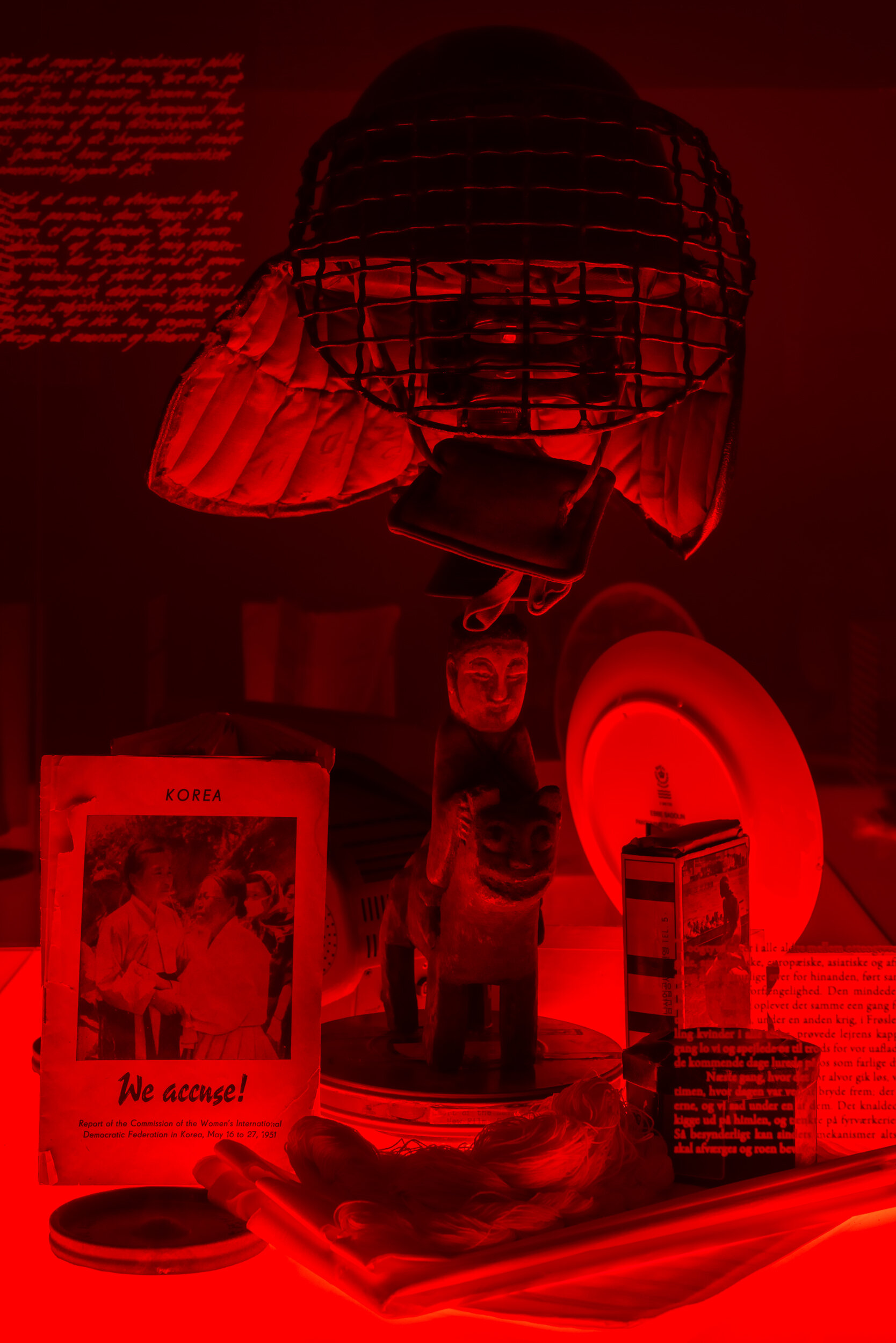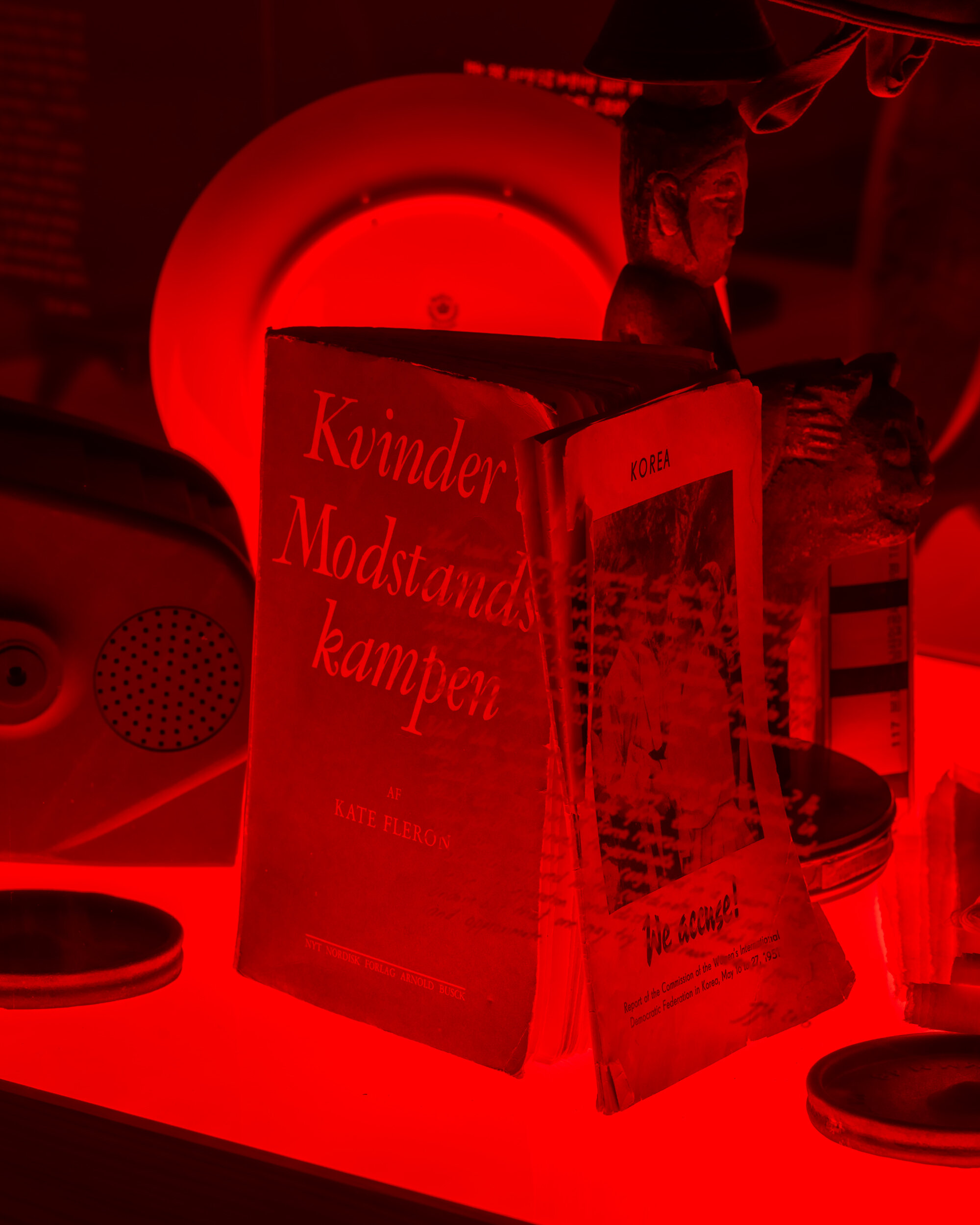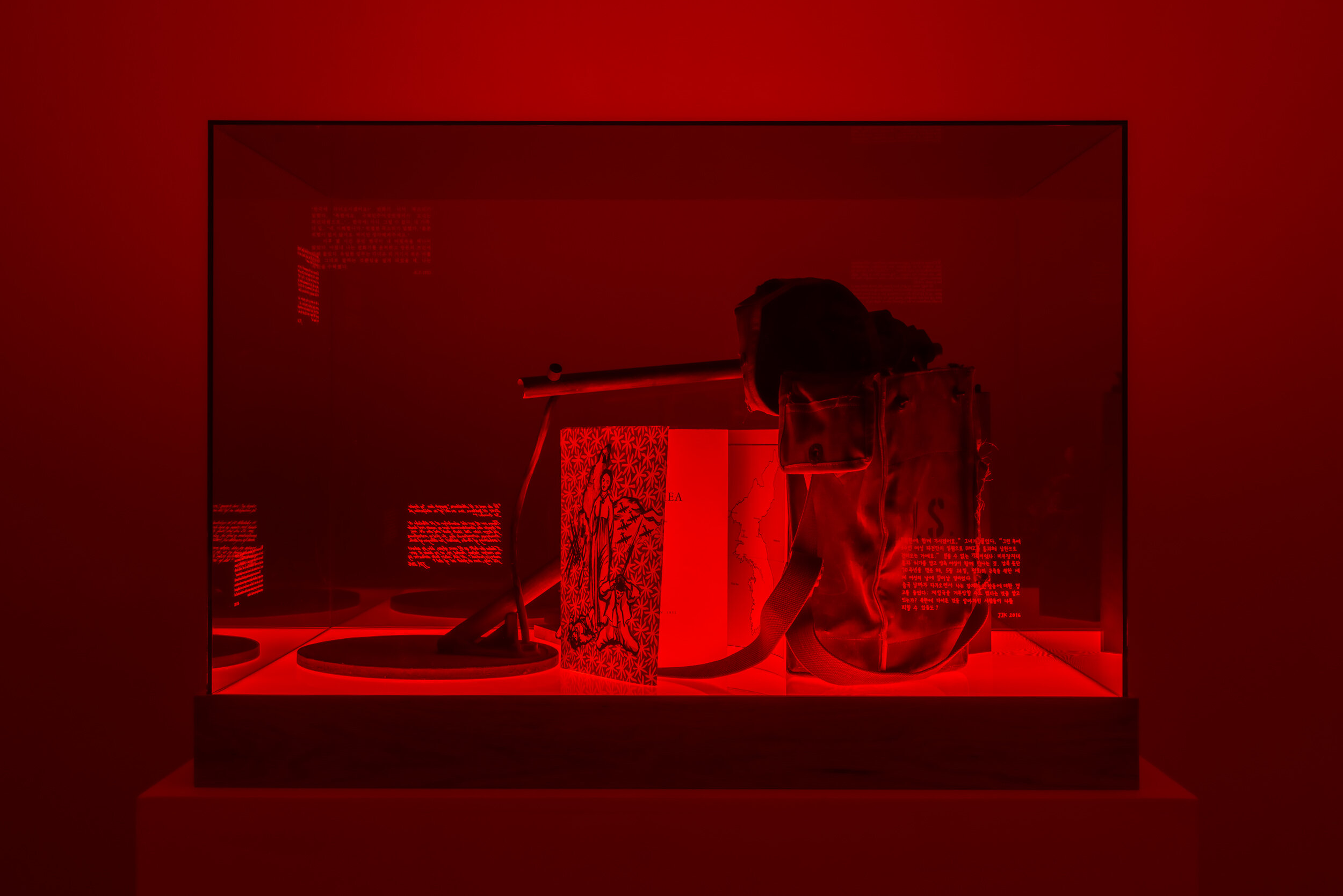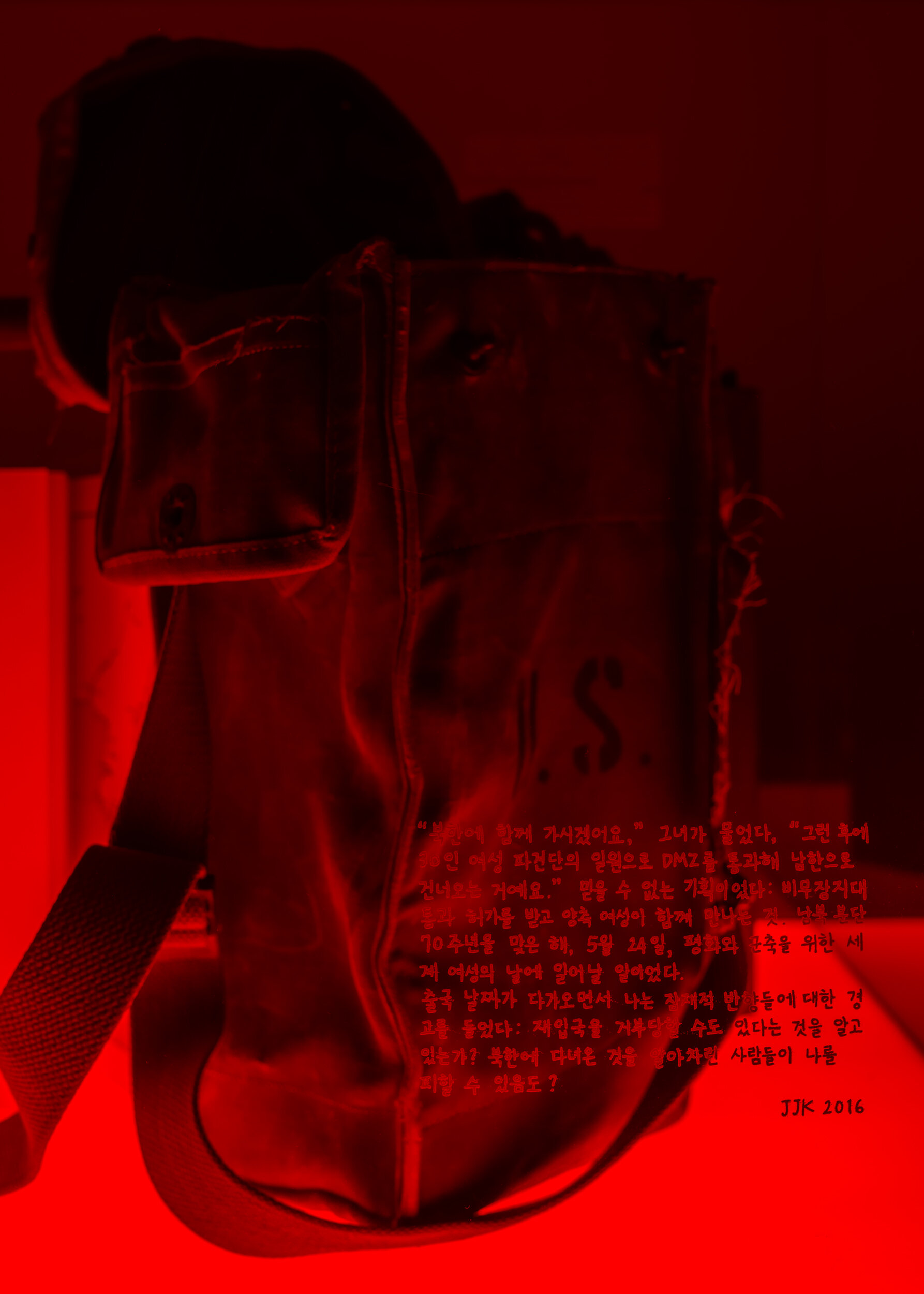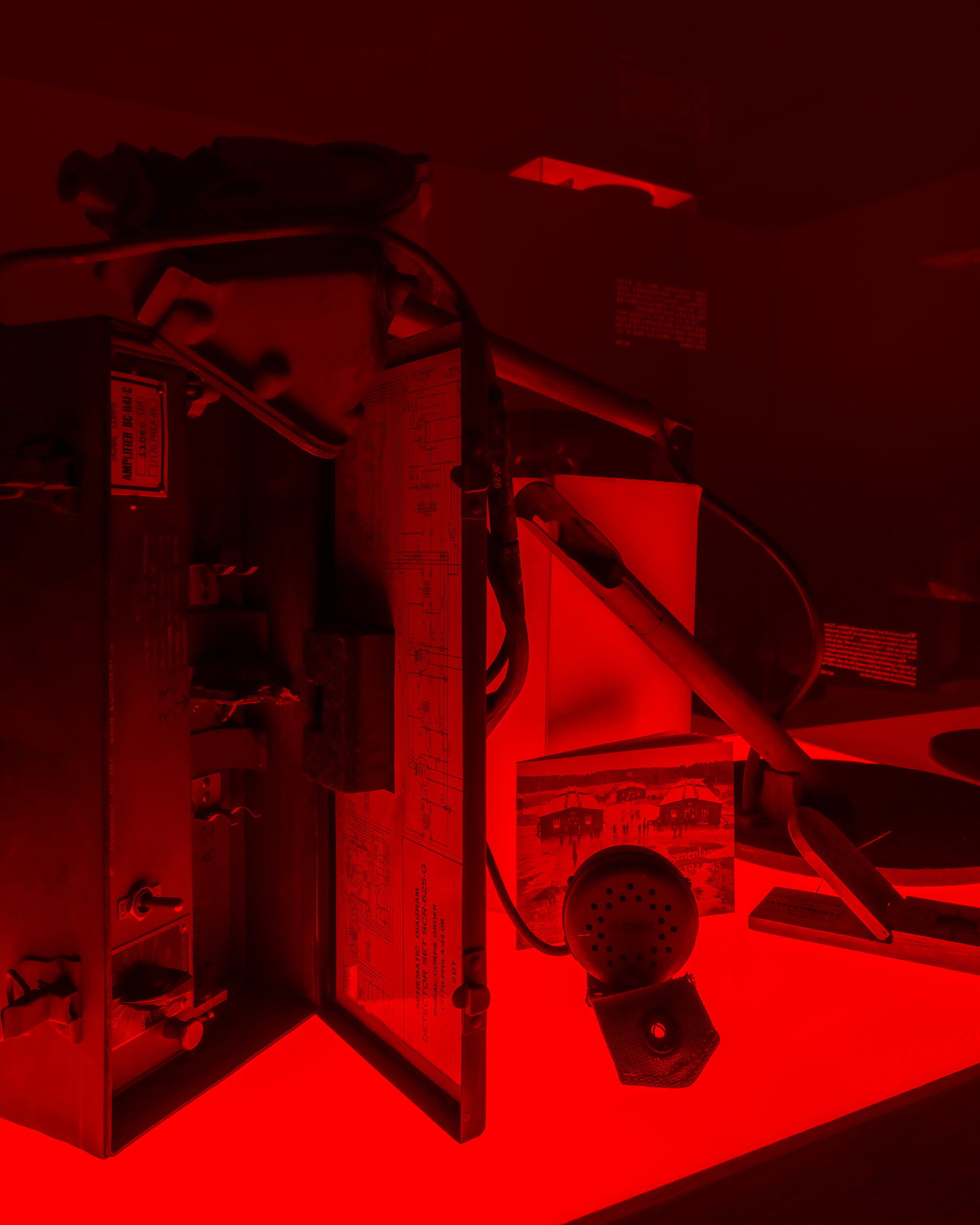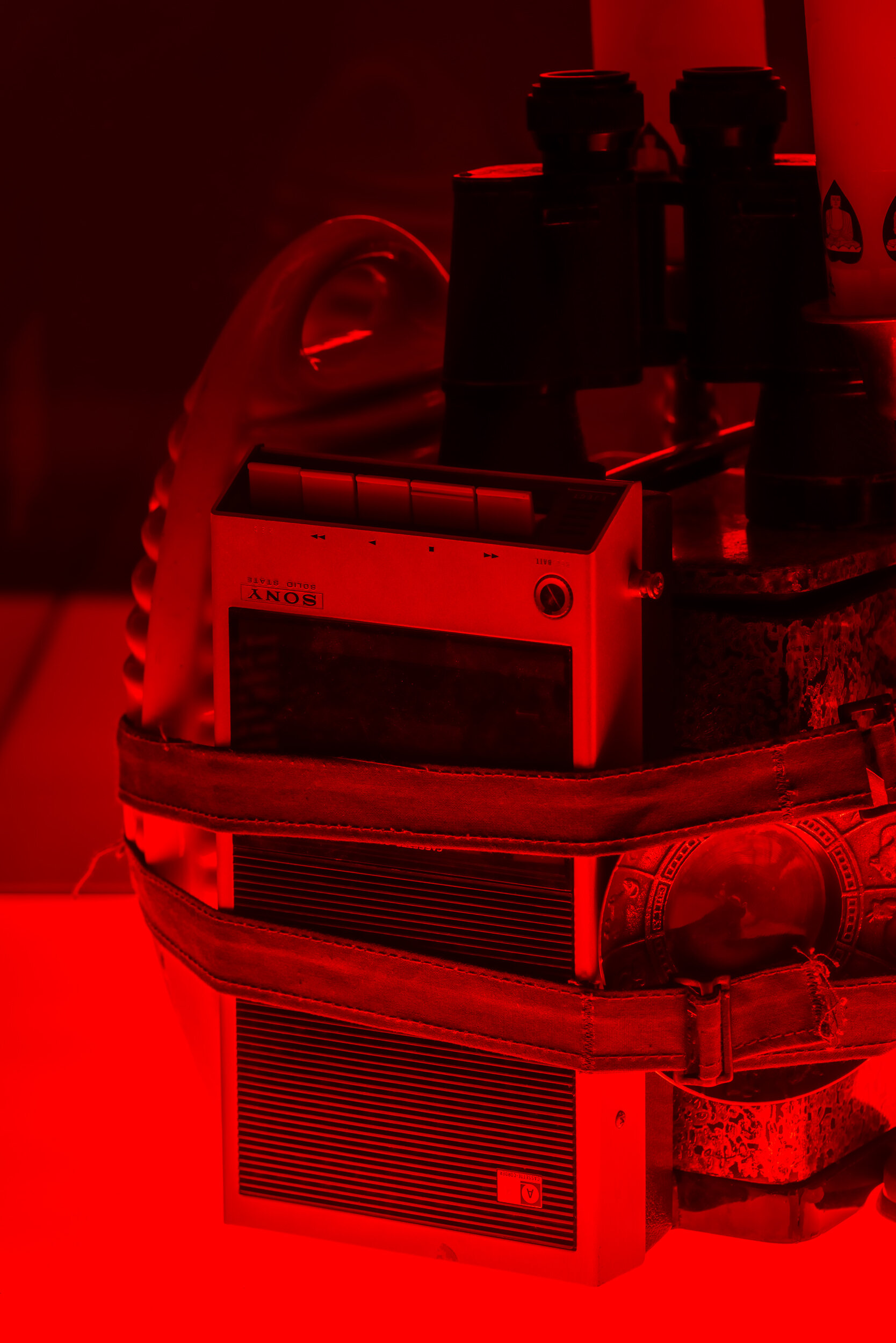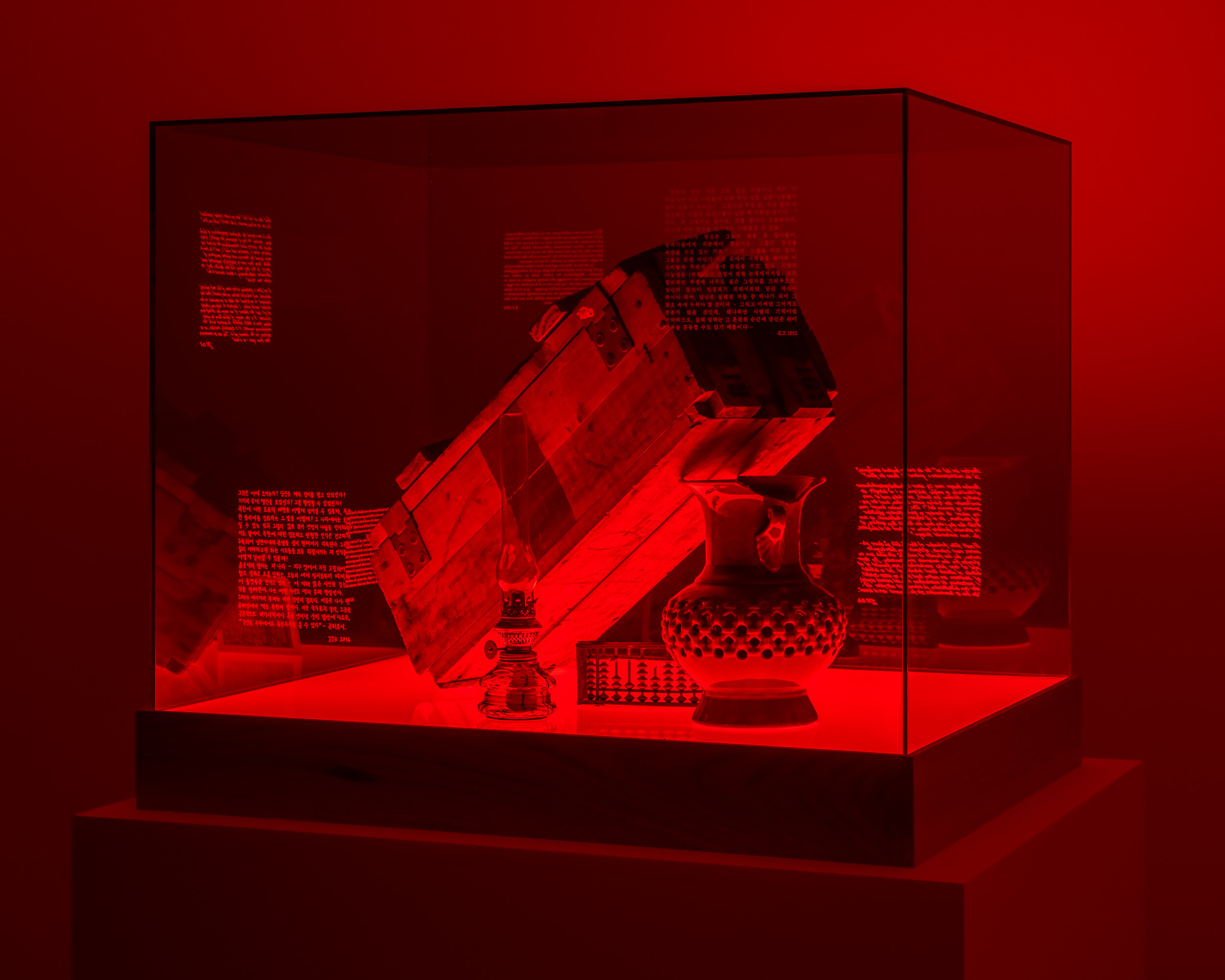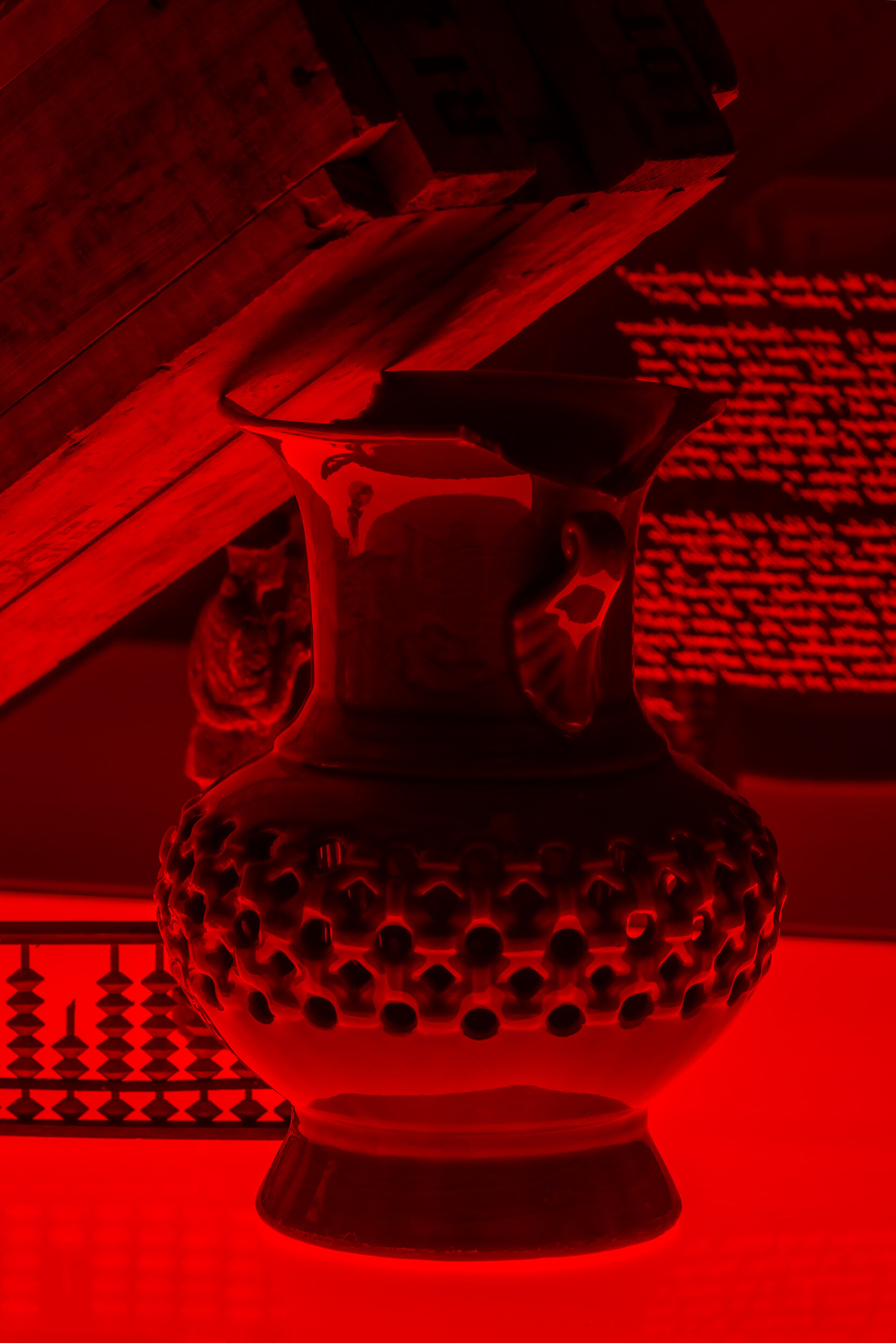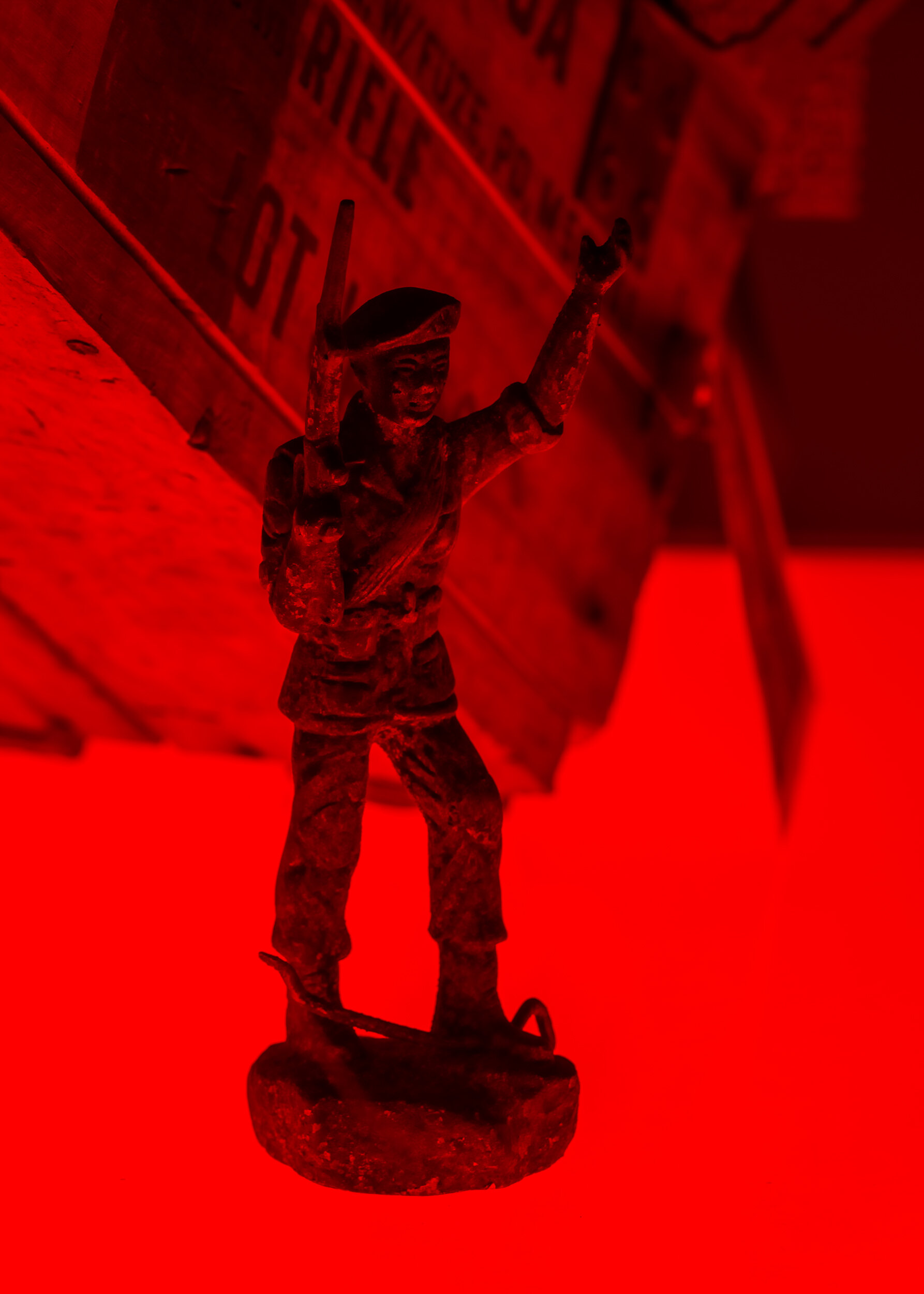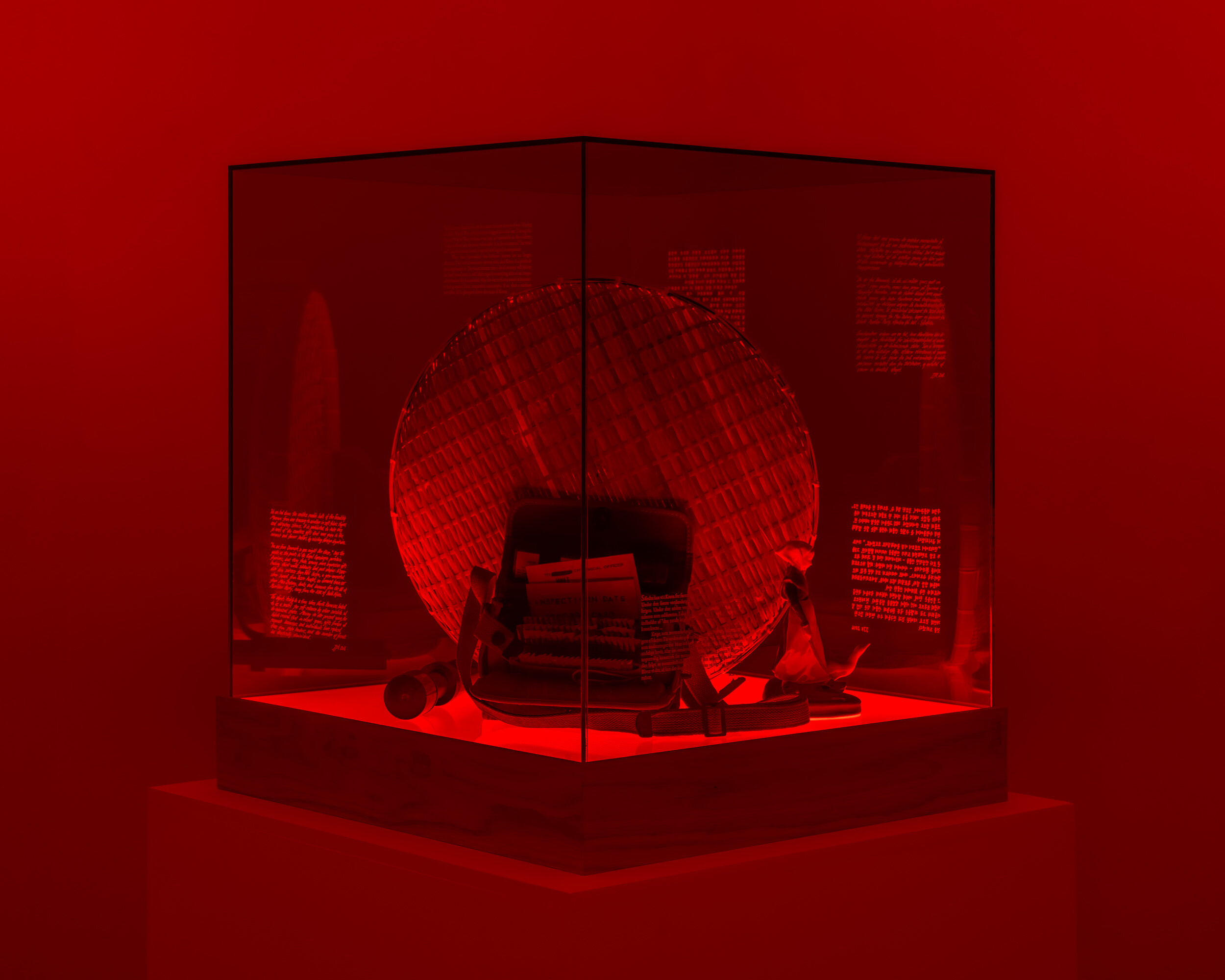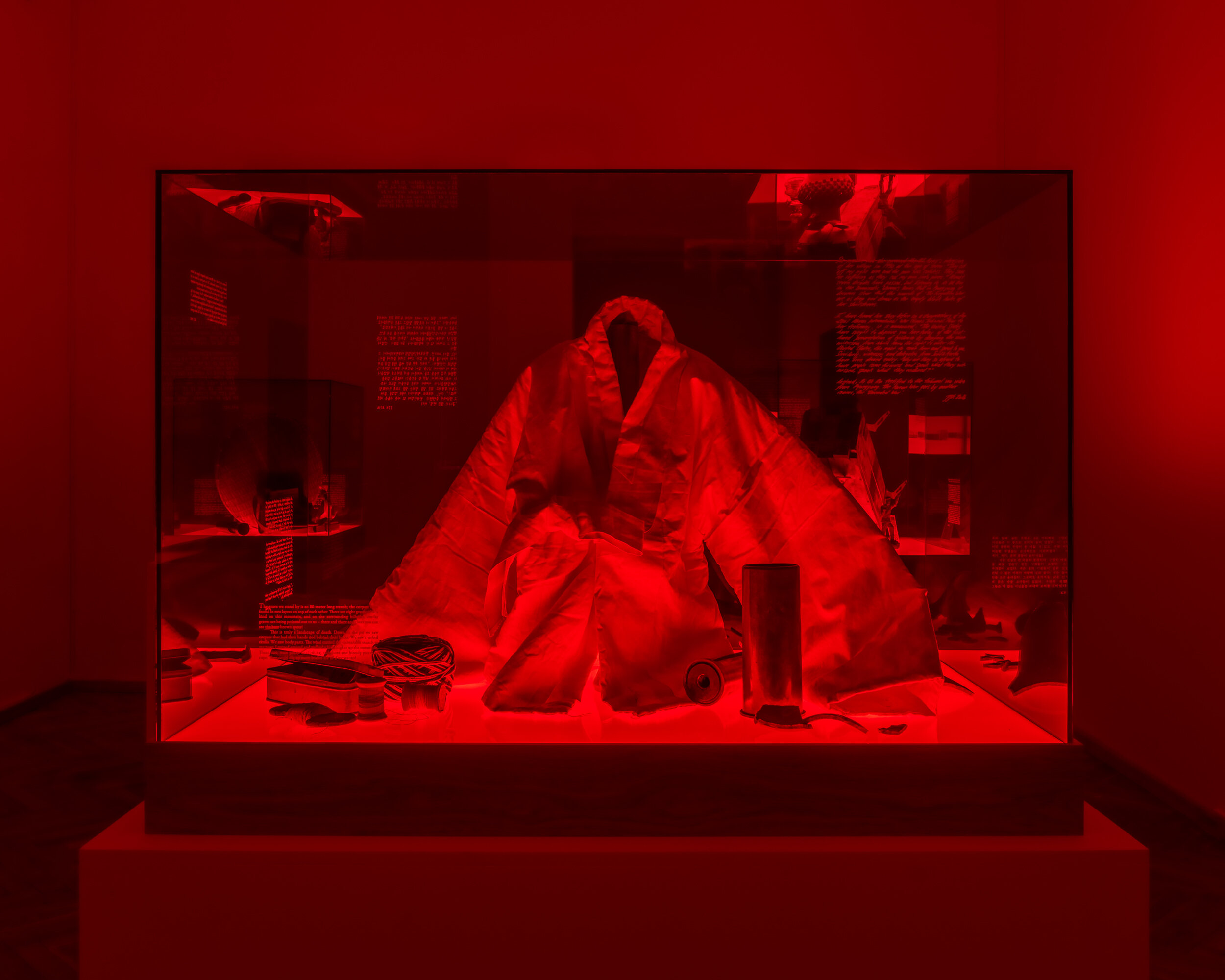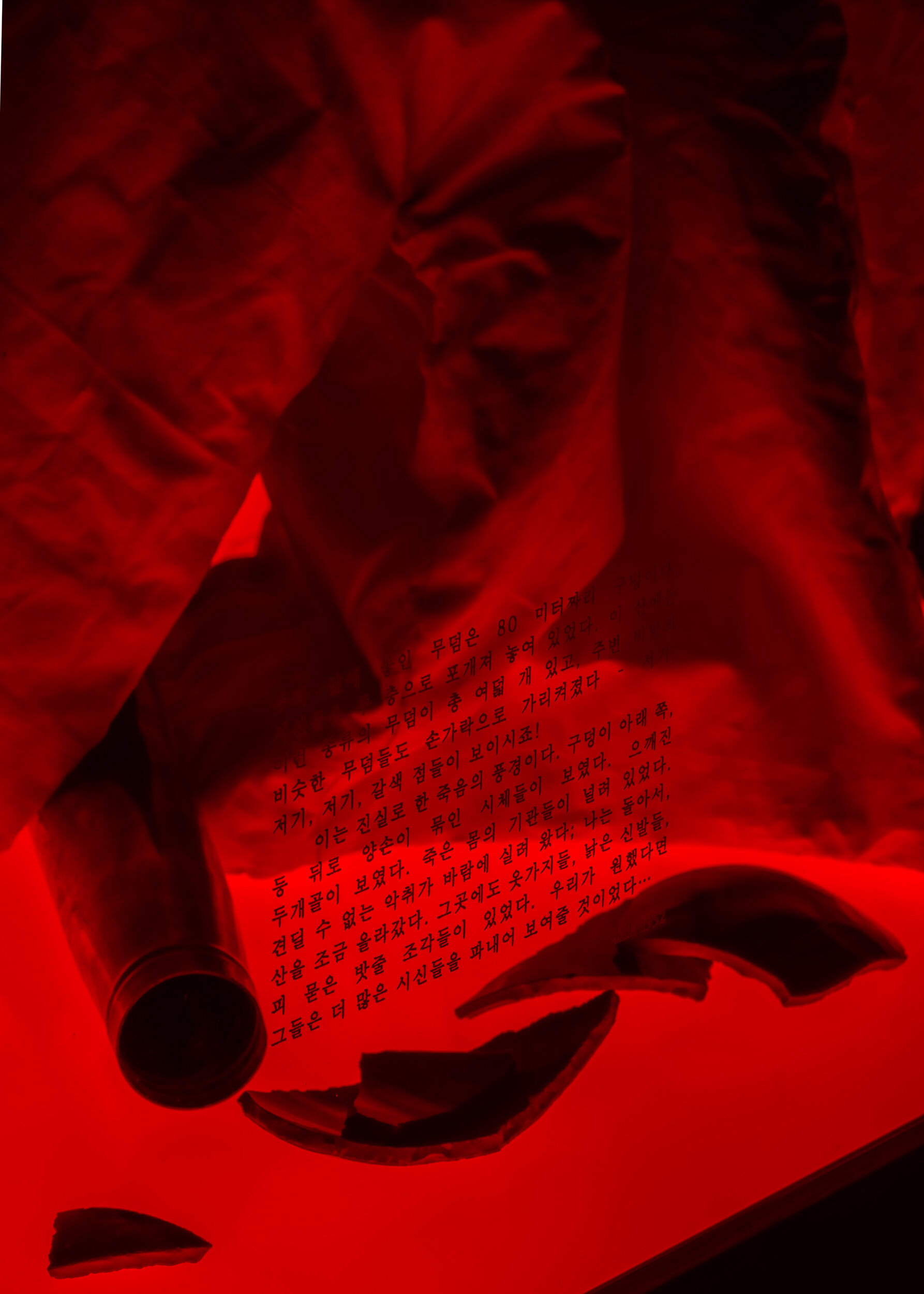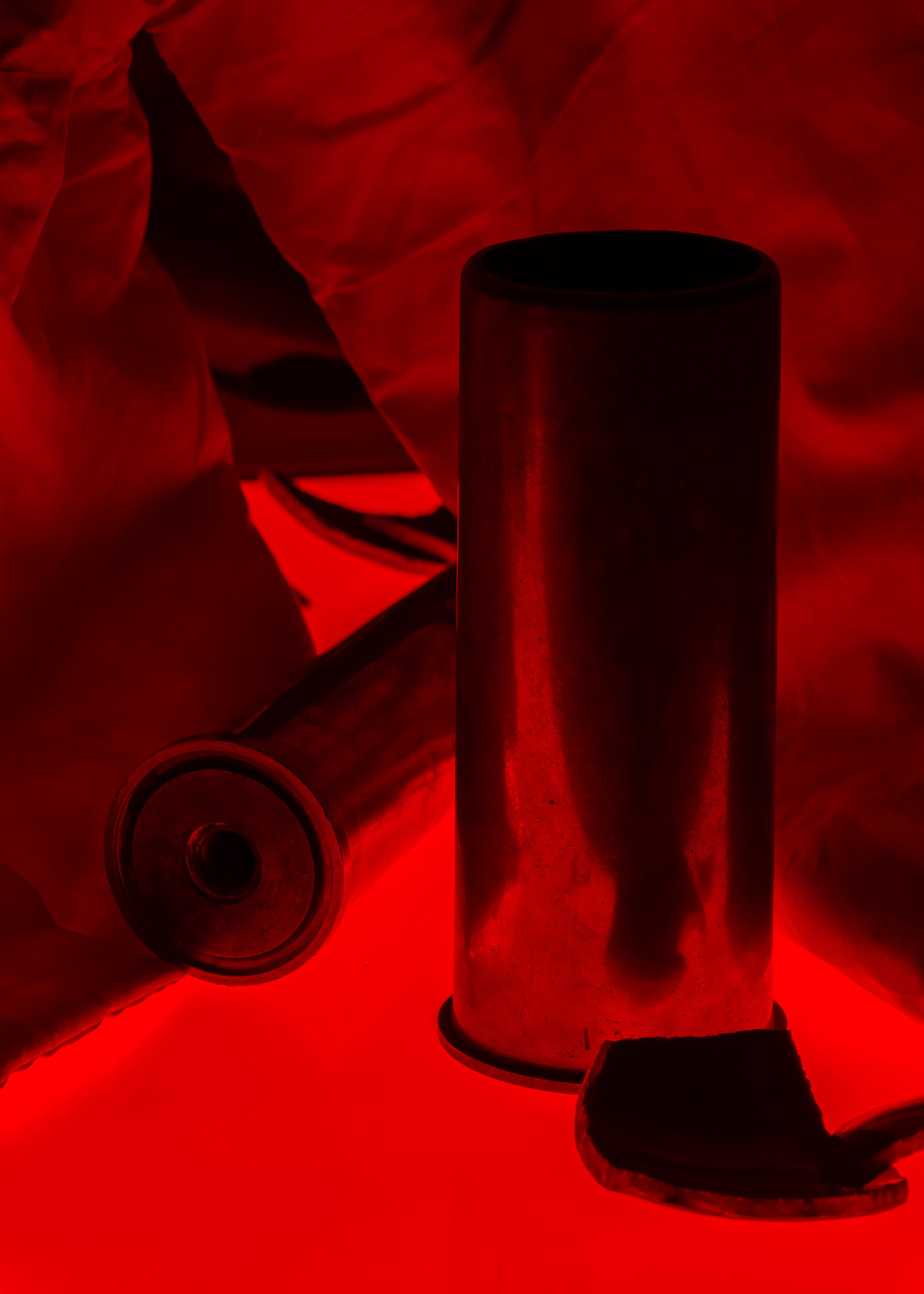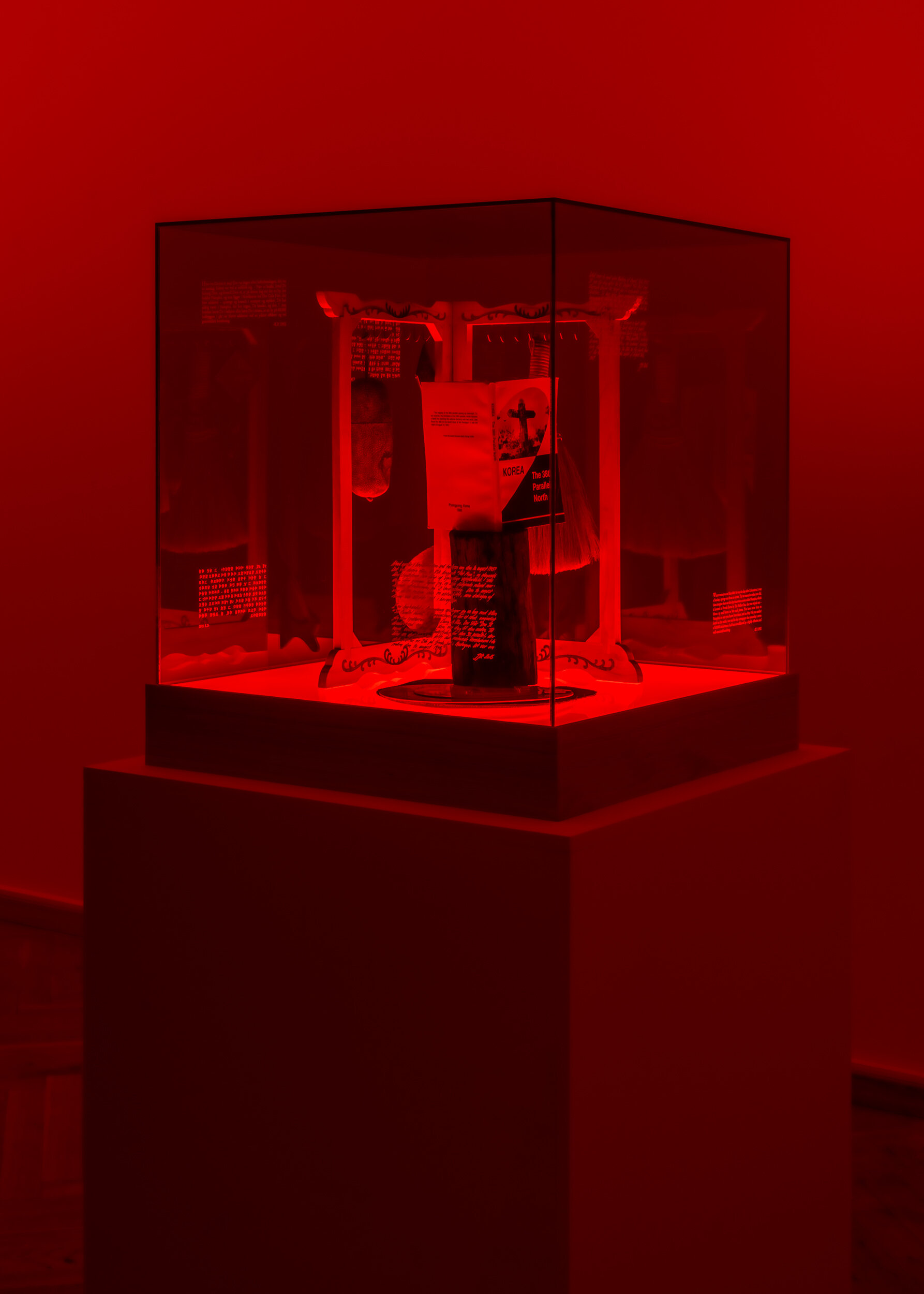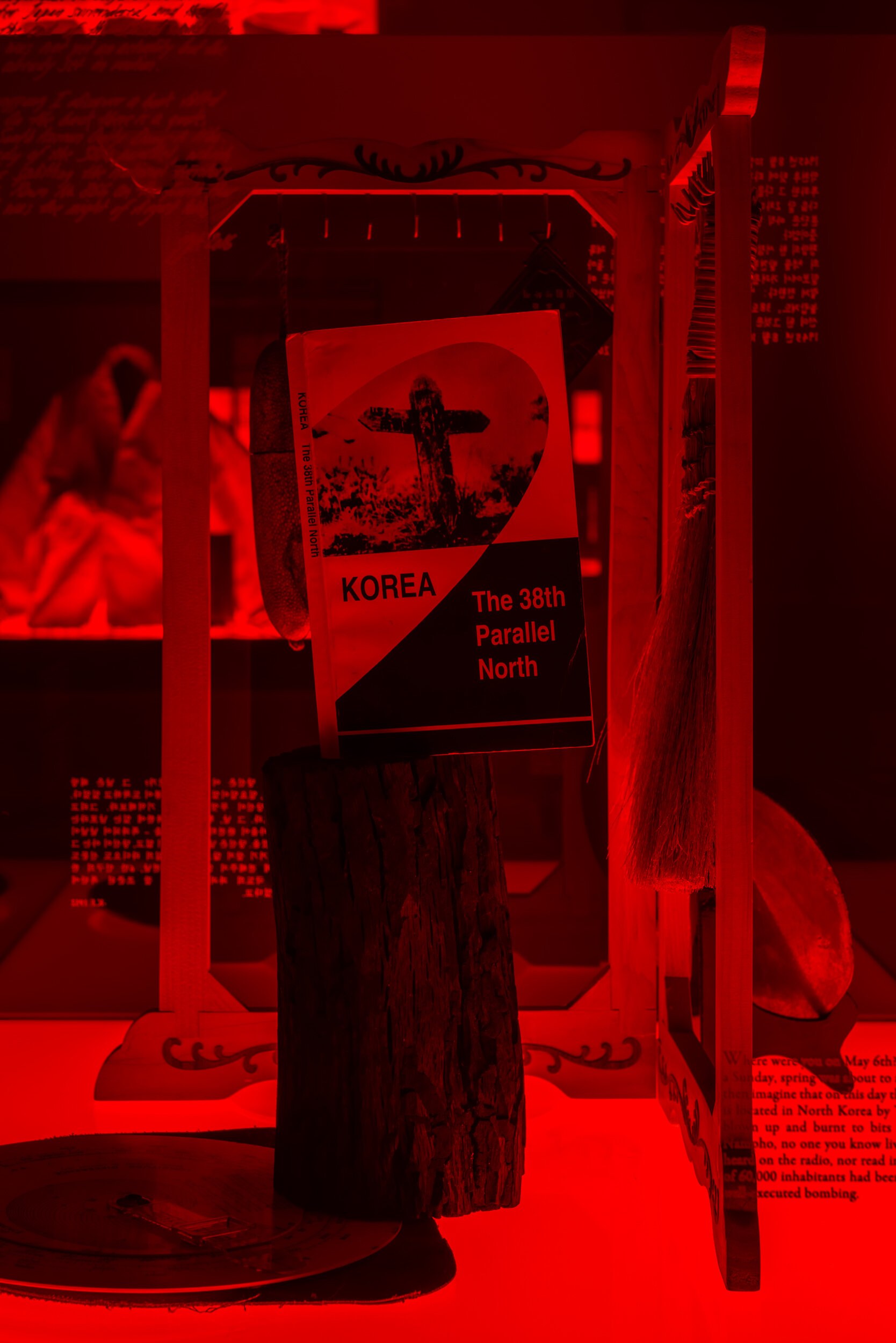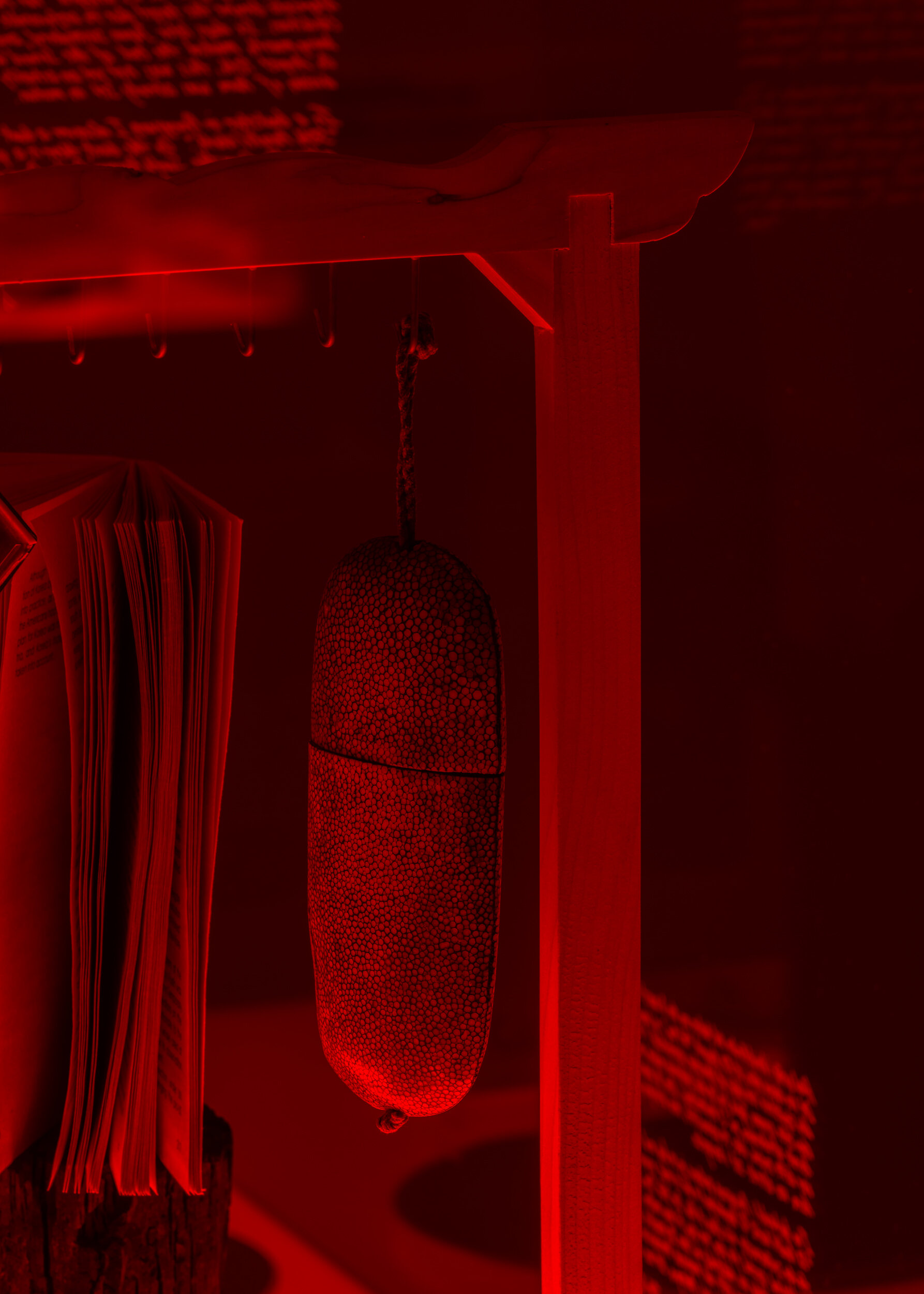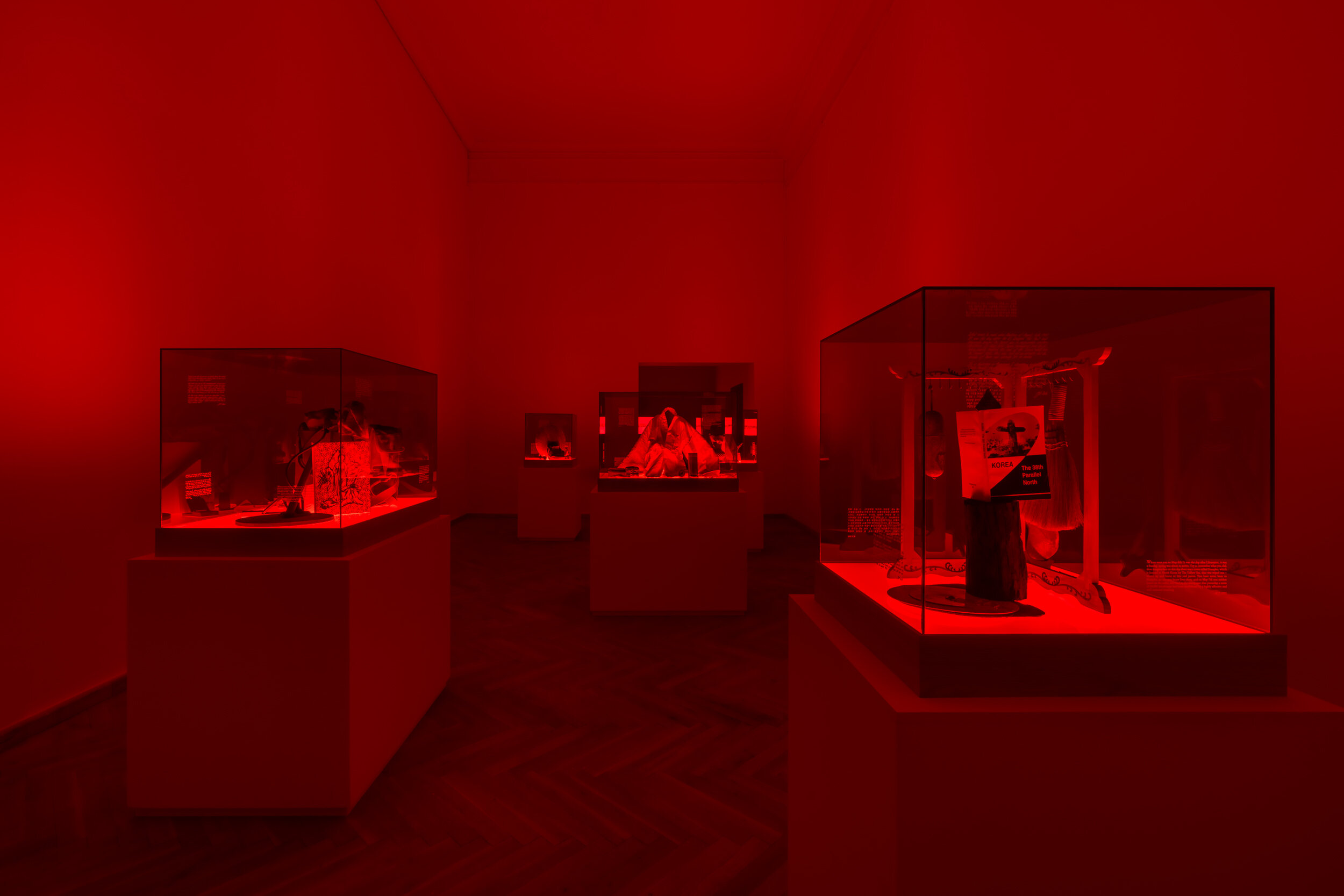
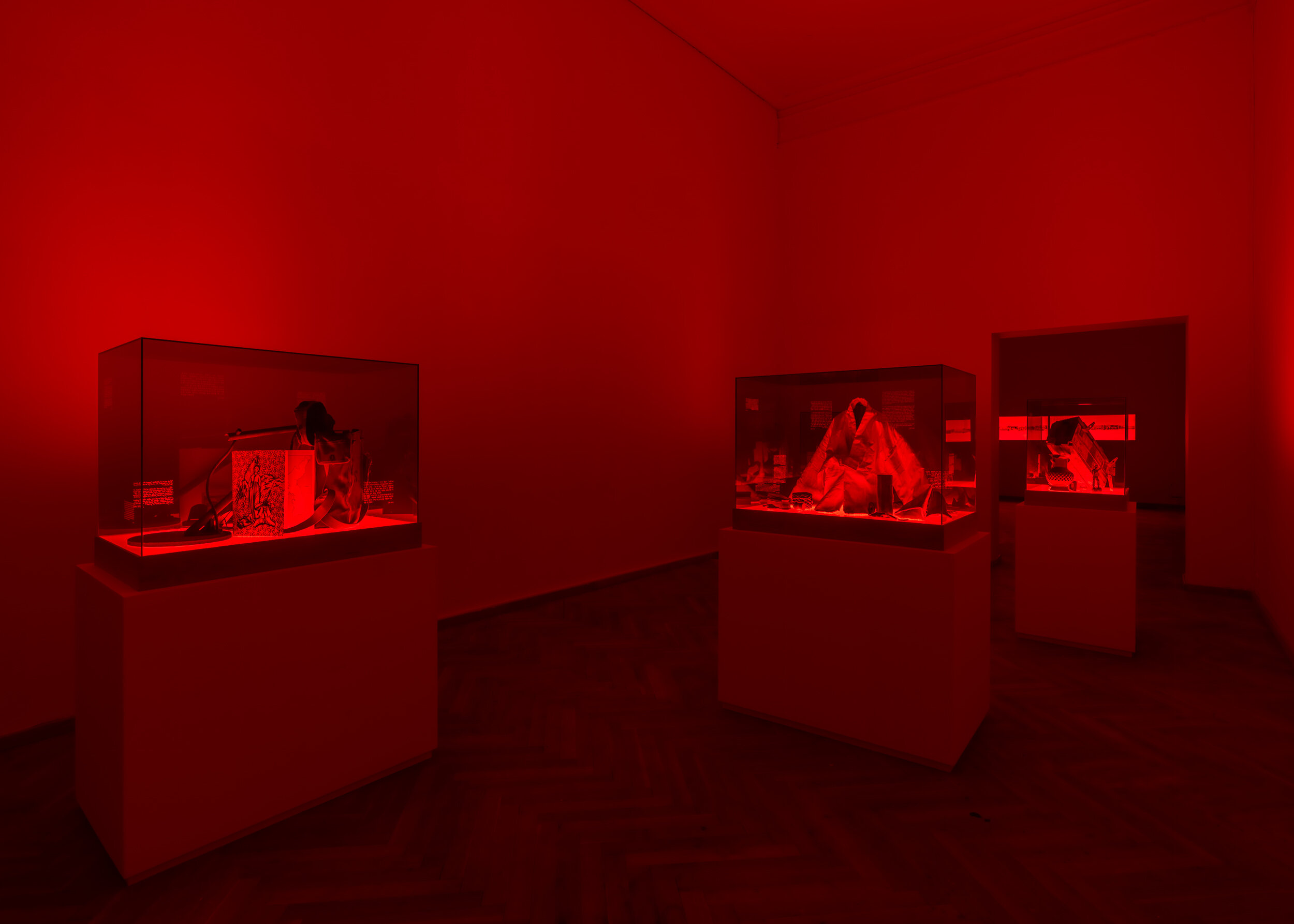

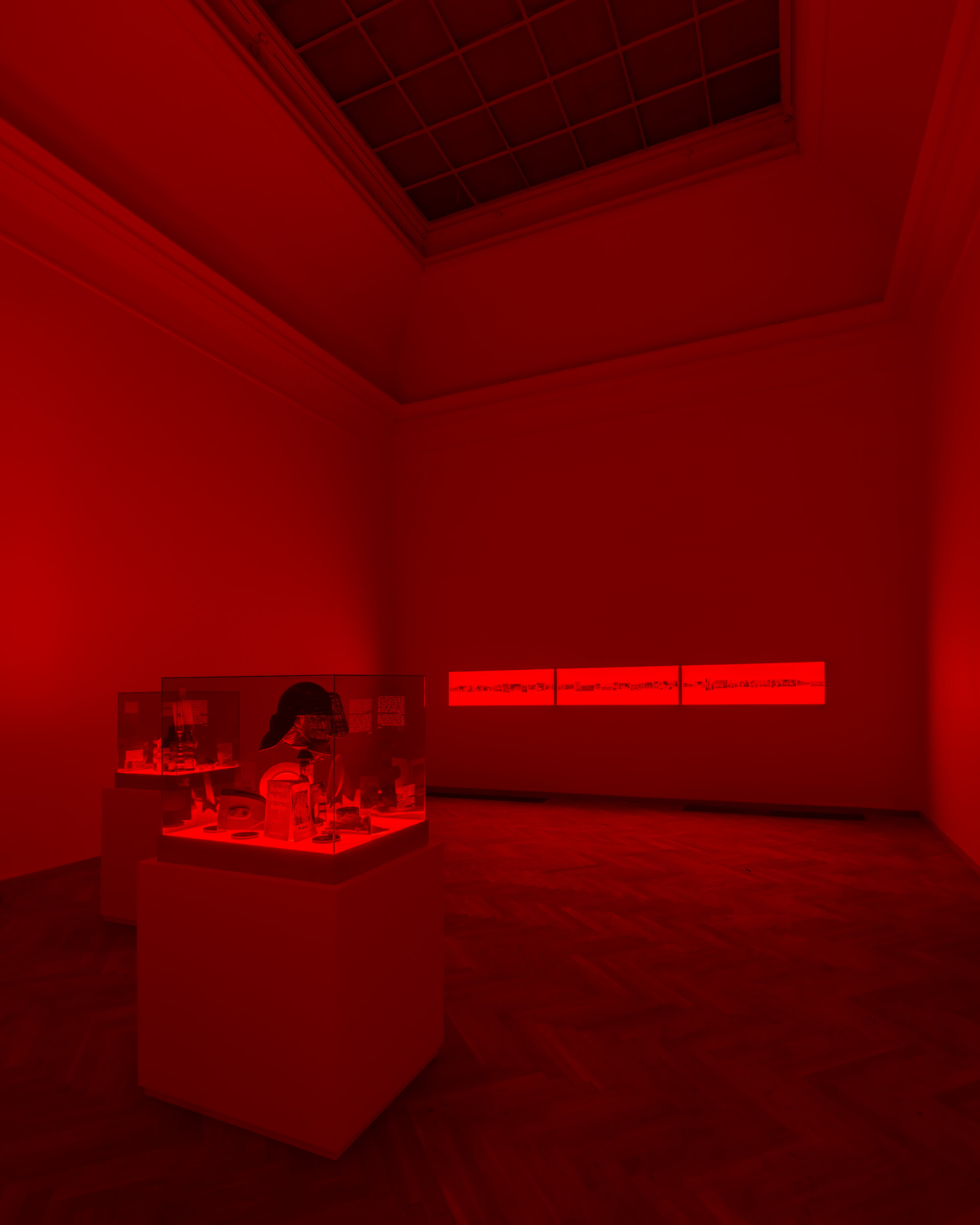
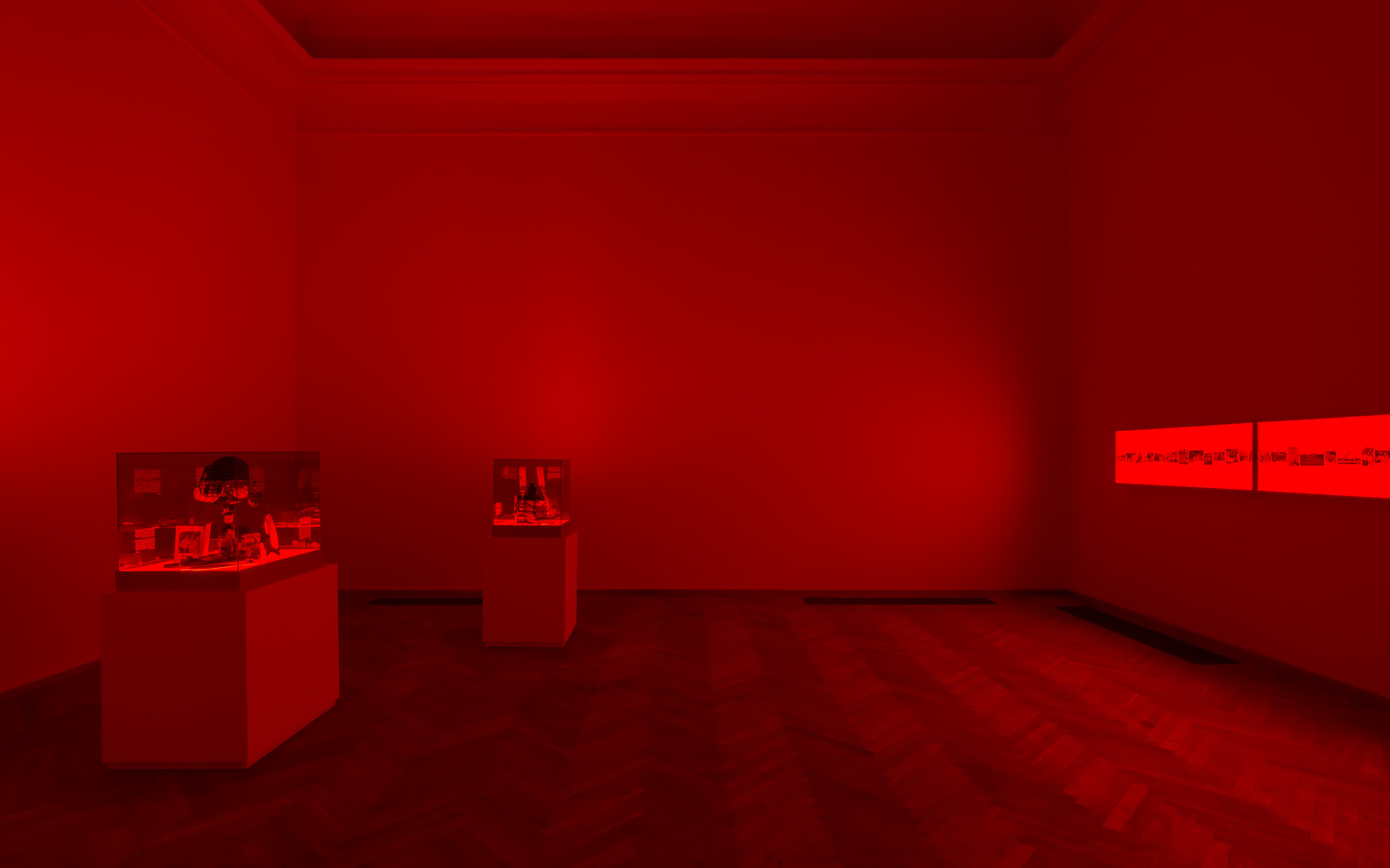

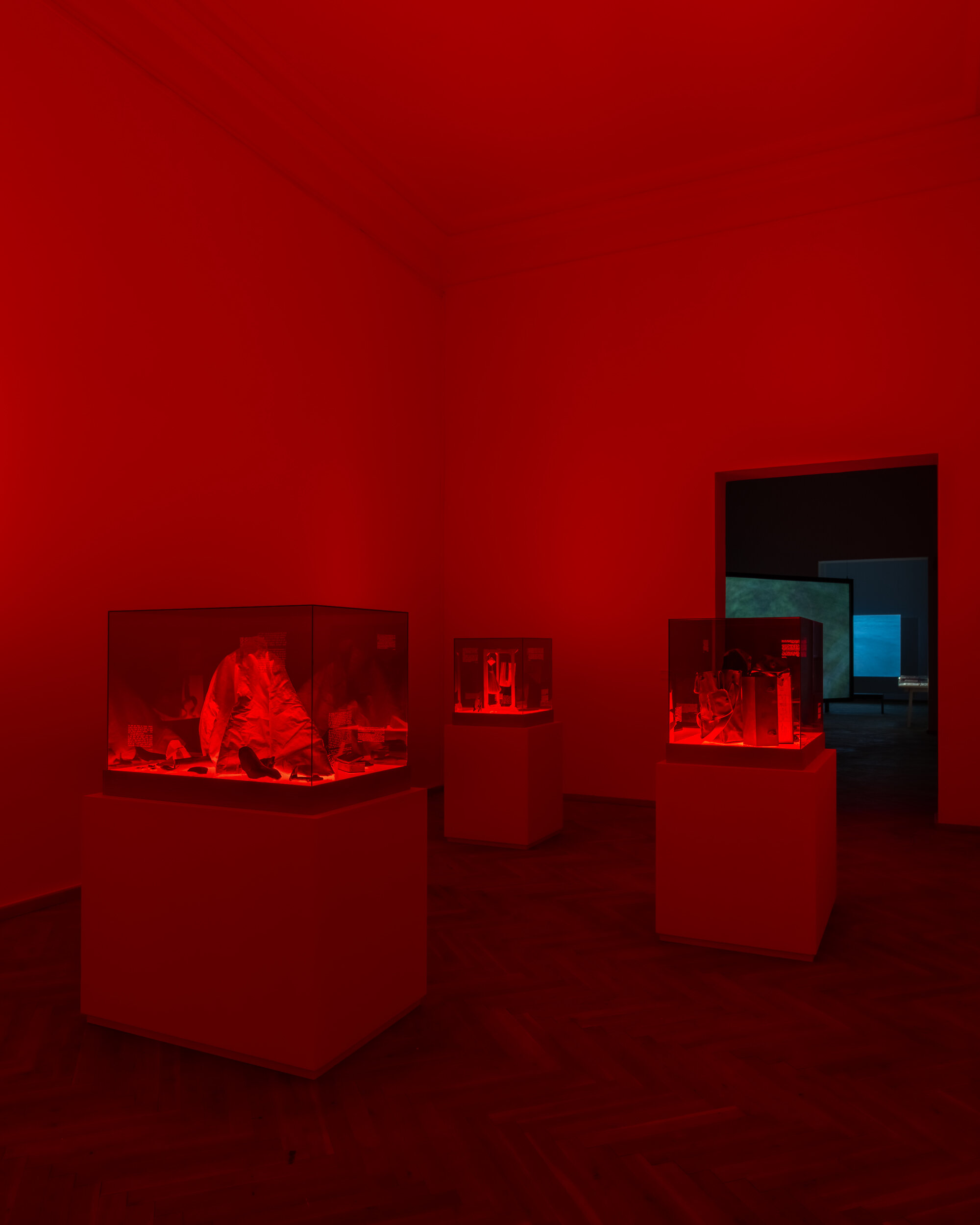
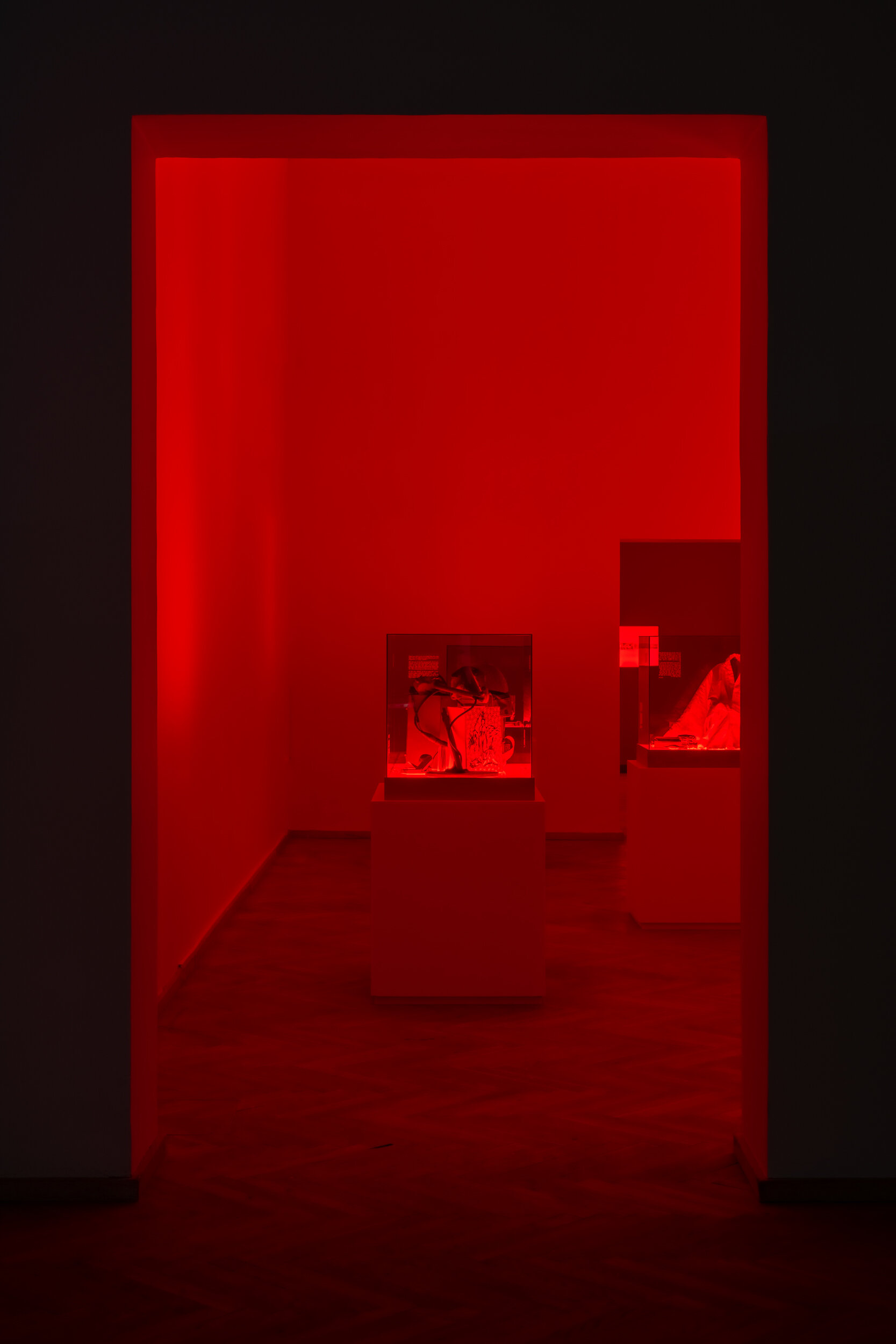
OF SPECTERS OR RETURNS, 2020
Installation. Dimensions of boxes range from 57x67x57 cm – 103x66x76 cm. 7 red acrylic boxes with UV printed texts, handcrafted oak light boxes, unique objects collected by the artist in North Korea, South Korea, Denmark, and the US.
In May 2015, 70 years after the Division of Korea, Jane Jin Kaisen took part in a historic border crossing as part of an international delegation comprising thirty women. During the trip, the artist became aware of a similar journey that had taken place during the Korean War in May 1951 when a related delegation of women from eighteen different countries travelled to North Korea. One of the participants was Danish journalist and women’s rights advocate, Kate Fleron, a central figure in the Danish resistance movement who had been imprisoned in the Frøslev camp during World War II. The texts on the seven red display cabinets consist partly of Kaisen’s diary entries from North Korea and partly of excerpts from Fleron’s book Fra Nordkorea: Indtryk fra en rejse til verdens ende foretaget i maj 1951 (From North Korea: Impressions from a journey to the end of the world made in May 1951). The display cabinets contain a collection of unique objects collected by the artist on trips to North and South Korea, Denmark and the United States. The objects include: an antique mirror from the Koryo Dynasty, an American chemical weapons kit, an Korean War US ammunitions box, artillery shells, a landmine detector, Royal Danish porcelain, a hanbok from the 1950s, a South Korean matchbox from the 1970s with an image of the Little Mermaid, a blood-stained South Korean military police helmet from the 1980s democracy movement, a Sony cassette player, a Japanese lunchbox from the 1950s, a World War II Japanese military mirror, a 1950s US army Korean War psychological warfare propaganda leaflet, a rice tray, gime cotton string use in shamanic rituals in Jeju Island, a pamphlet from the Frøslev Camp, brass candle holders, army straps, Buddhist candles, a tin soldier figure, a kerosene lamp, a celadon vase, yarn and sewing kit, and books, including several of Kate Fleron’s books. The interplay between objects and textual reflections establishes a connection across time and place where the horrors of the Korean War evoke memories of World War II, and where the Cold War climate that characterised Kate Fleron’s journey resonate with the artist’s experiences decades later.

